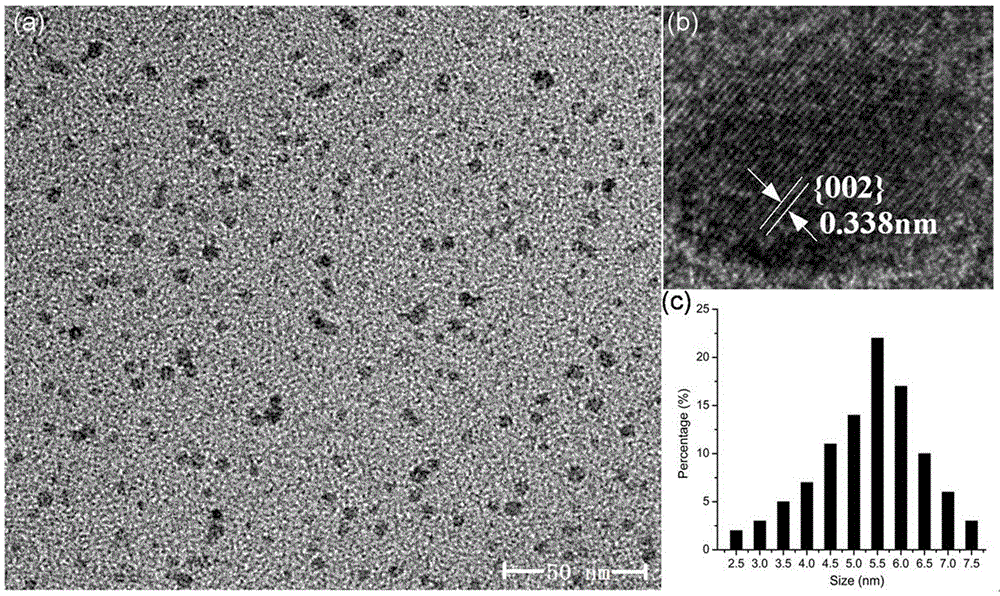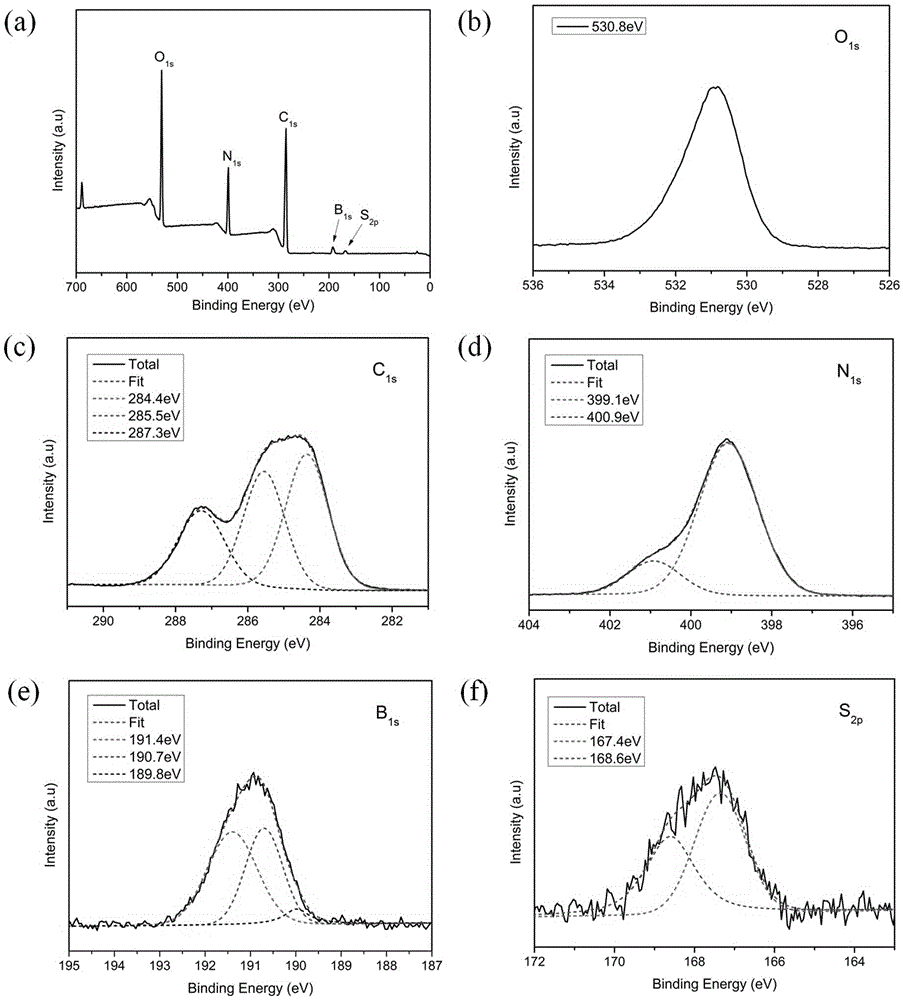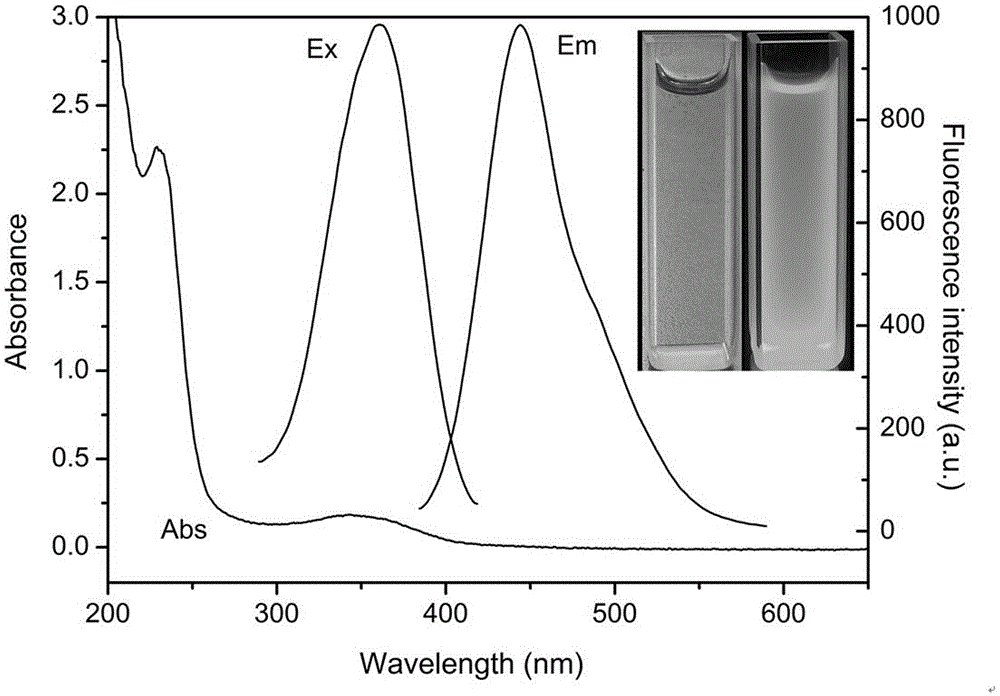Fluorescent doped carbon nanometer photocatalyst and preparation method and application thereof
A photocatalyst and carbon nanotechnology, applied in the field of biochemical analysis, can solve problems such as limiting large-scale practical application, and achieve the effects of short preparation time, low cost, and simple equipment and instruments
- Summary
- Abstract
- Description
- Claims
- Application Information
AI Technical Summary
Problems solved by technology
Method used
Image
Examples
Embodiment 1
[0030] The preparation method of fluorescence-doped carbon nanomaterial N, B, S-CDs, the specific steps are:
[0031] Weigh 2.1g of citric acid, 1.4g of thiourea, 1.4g of boric acid, 5mL of ethylenediamine and dissolve them in 5mL of water, then transfer to a polytetrafluoroethylene-lined autoclave and heat to 220°C at a rate of 10°C per minute. ℃, and kept for 3h, the obtained reddish-brown solution; with 1molL -1 Adjust the pH to 7.0 with NaOH solution, then centrifuge at 8000 rpm for 20 min, dissolve the obtained water, perform dialysis, and separate unreacted substances to obtain a brown N, B, S-CDs aqueous solution; rotary evaporation removes water, and then dissolves in deionized water in Store at 4°C protected from light.
Embodiment 2
[0033] The experiment of photocatalytic degradation of RhB using fluorescent doped carbon nanomaterials N, B, S-CDs, the specific steps are:
[0034] To 2700μL N, B, S-CDs (0.1mg / mL) and 300μL H 2 o 2 (3%), add 30mg of RhB (that is, the concentration is 10.0mg / mL), the resulting mixed solution is placed in a small beaker, first under dark conditions to continue stirring for 2h so that RhB and the catalyst reach adsorption-desorption equilibrium, and then Then continue to irradiate and stir the reaction under the natural light simulated by 300W xenon lamp to carry out the photocatalytic degradation experiment. The height of the light source from the liquid surface is about 20cm. color solution.
[0035] Take 100 μL of the solution for 0, 10, 20, 30, 40, 50, 60, 70, 80 and 90 min respectively to measure its UV-Vis spectrum, and record the absorbance corresponding to the maximum absorption wavelength of RhB at 554 nm (see Figure 4 , Figure 5 ). Experimental results show th...
PUM
 Login to View More
Login to View More Abstract
Description
Claims
Application Information
 Login to View More
Login to View More - R&D Engineer
- R&D Manager
- IP Professional
- Industry Leading Data Capabilities
- Powerful AI technology
- Patent DNA Extraction
Browse by: Latest US Patents, China's latest patents, Technical Efficacy Thesaurus, Application Domain, Technology Topic, Popular Technical Reports.
© 2024 PatSnap. All rights reserved.Legal|Privacy policy|Modern Slavery Act Transparency Statement|Sitemap|About US| Contact US: help@patsnap.com










